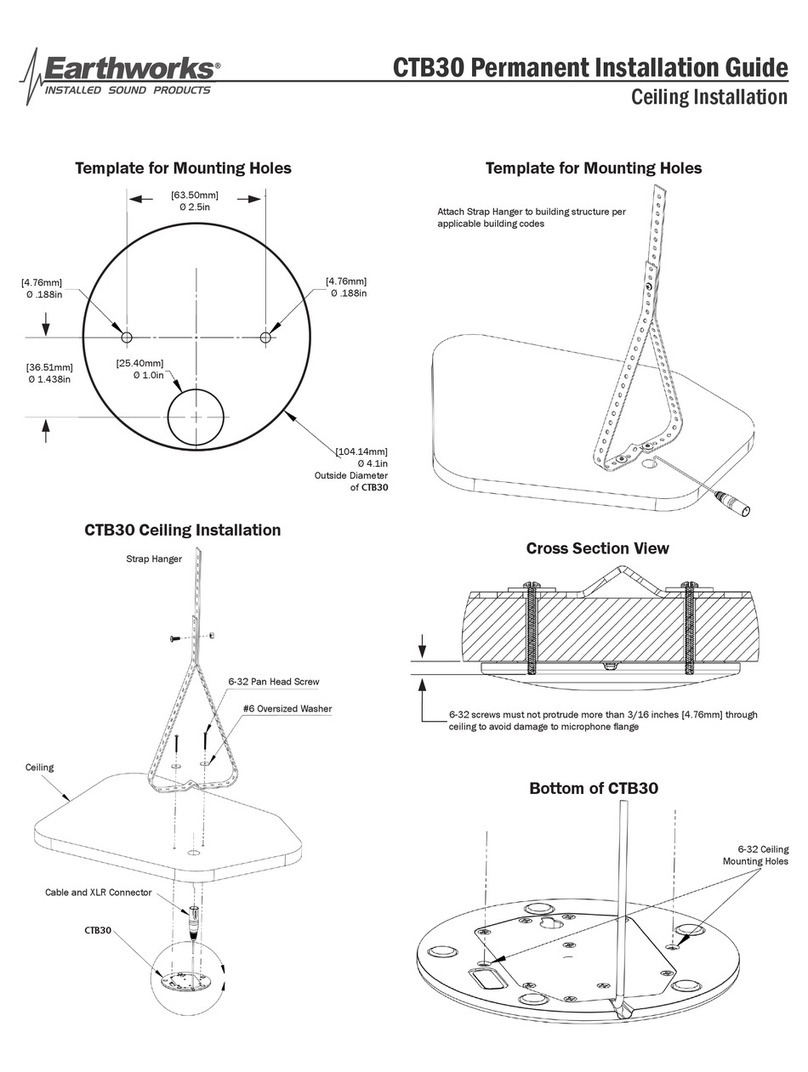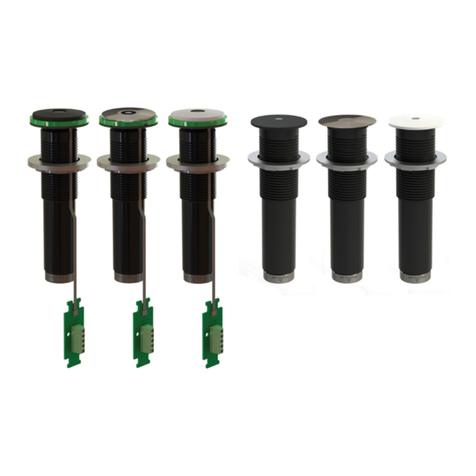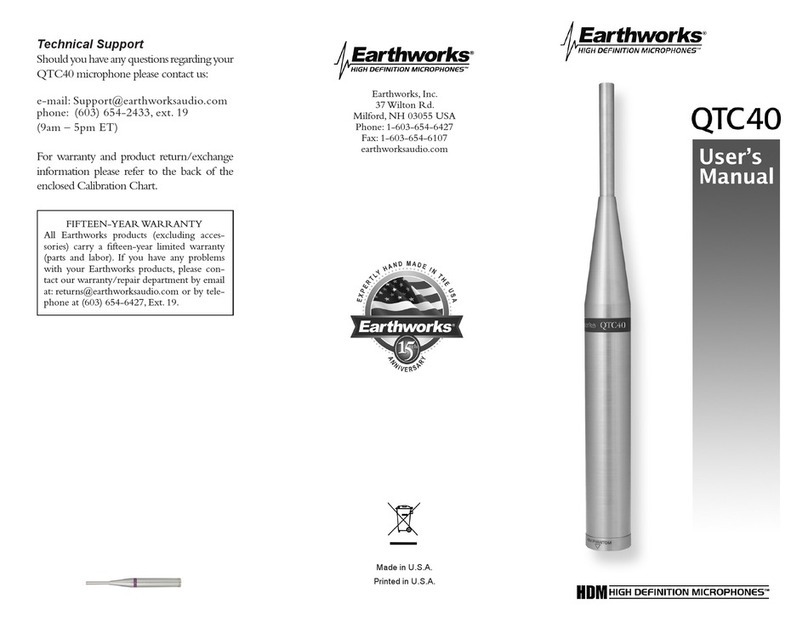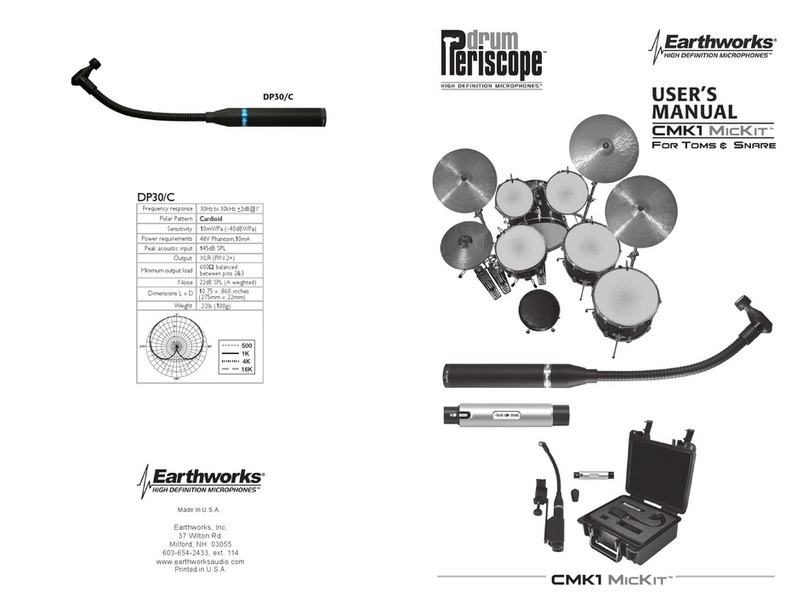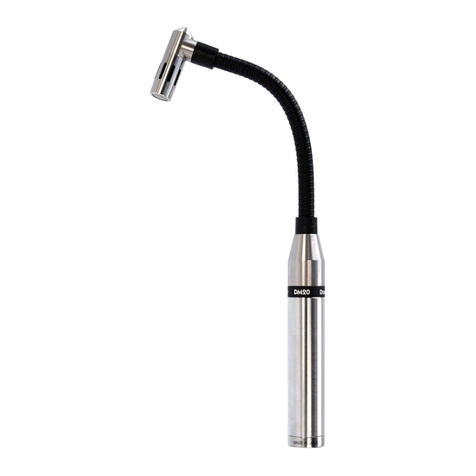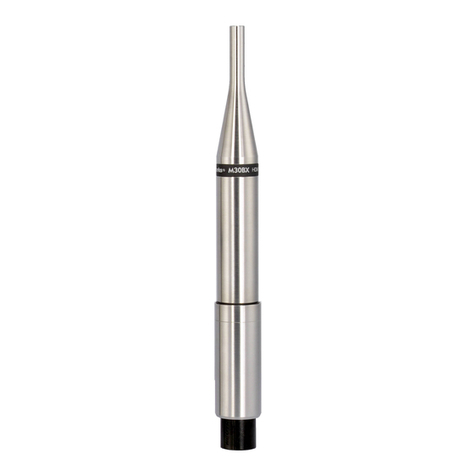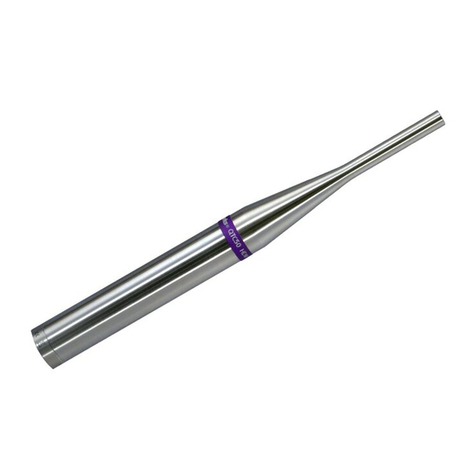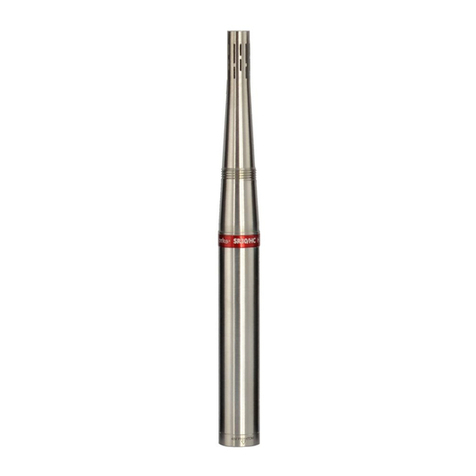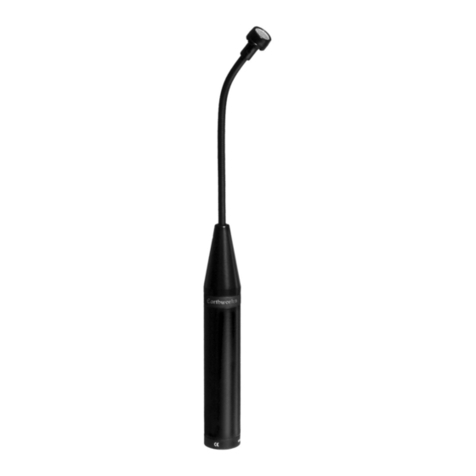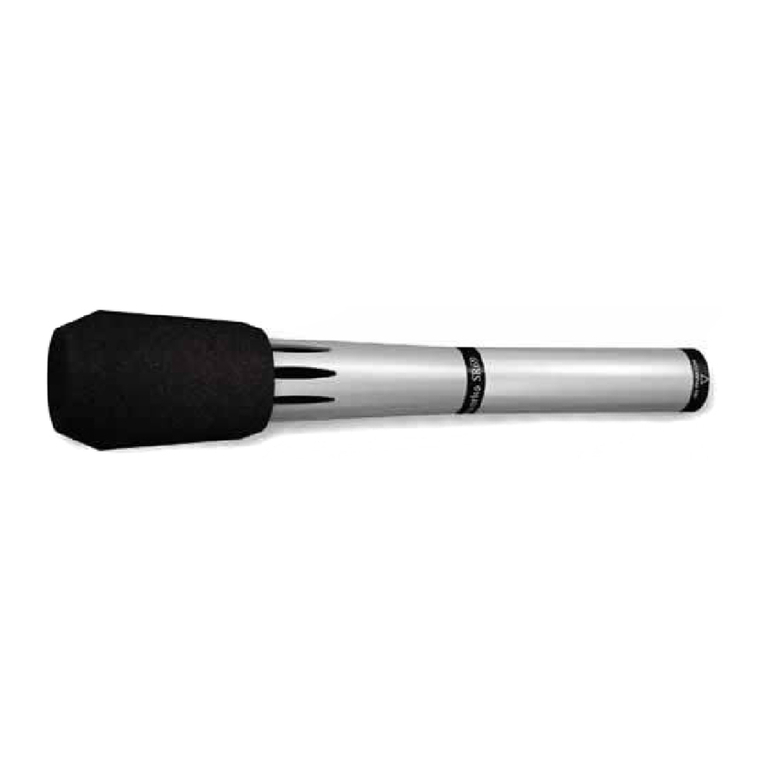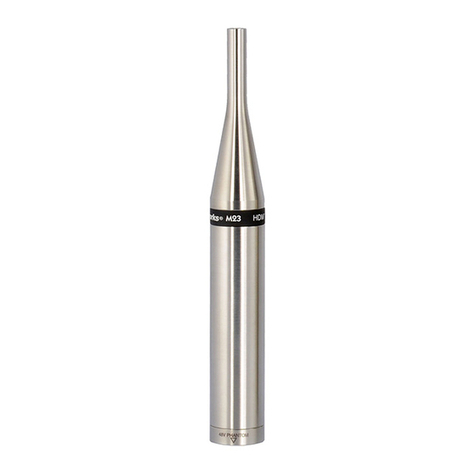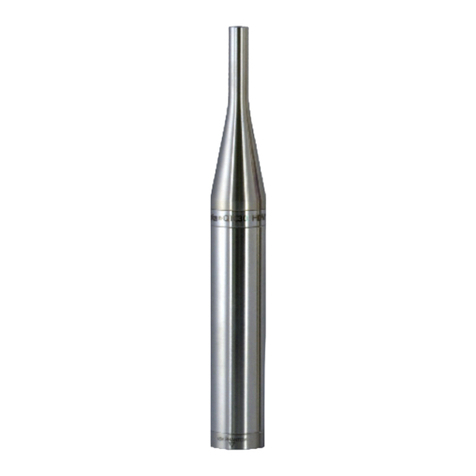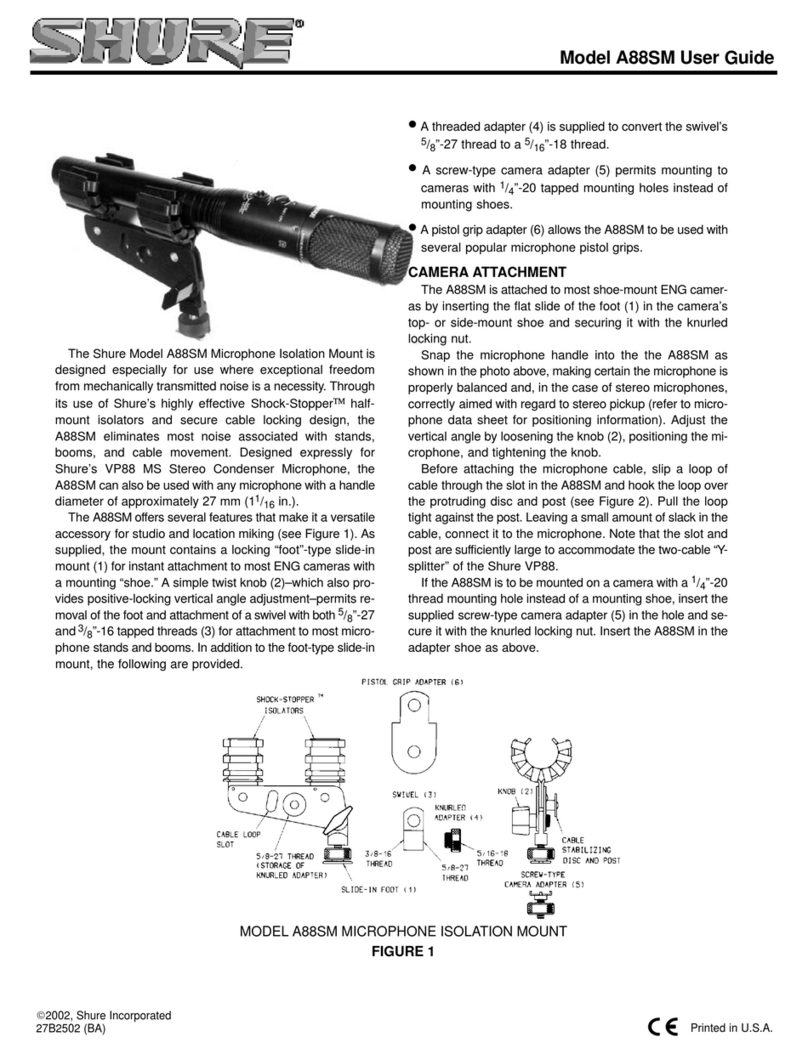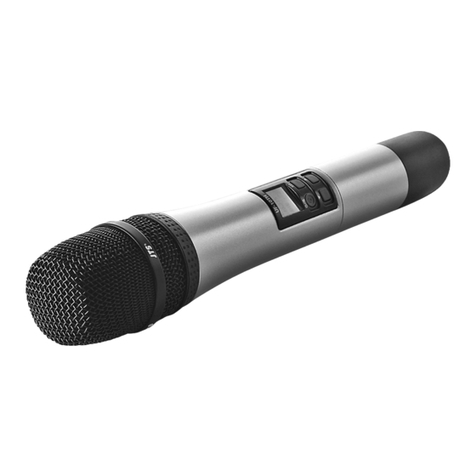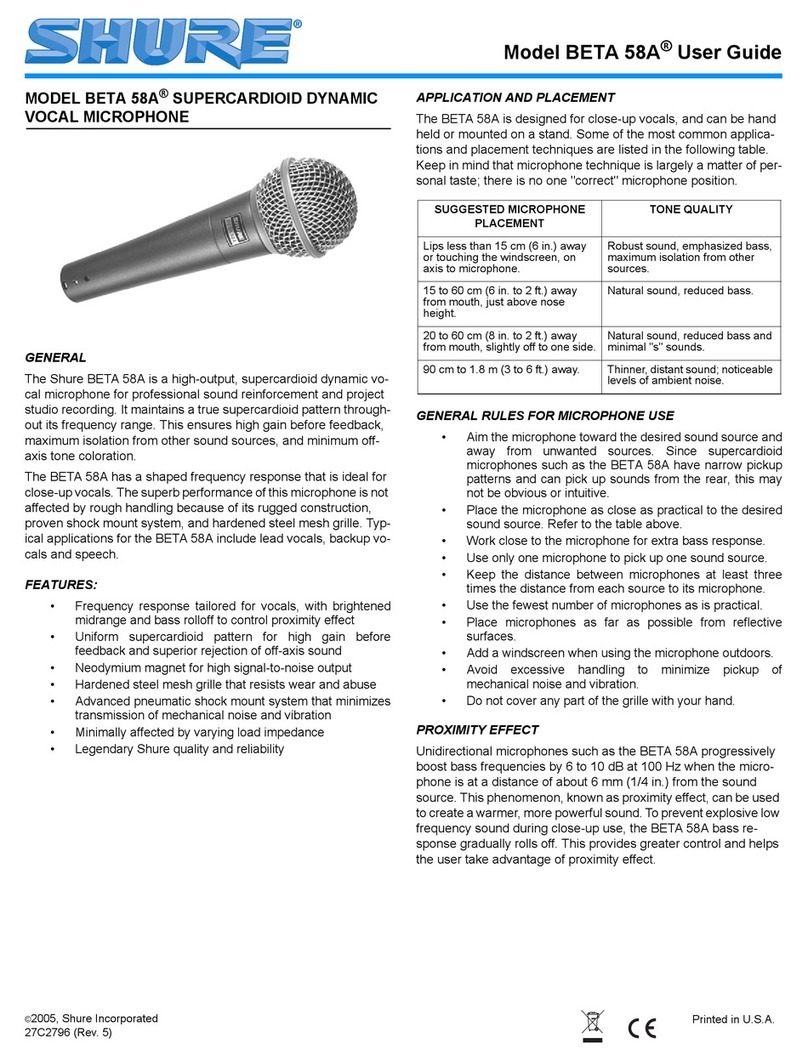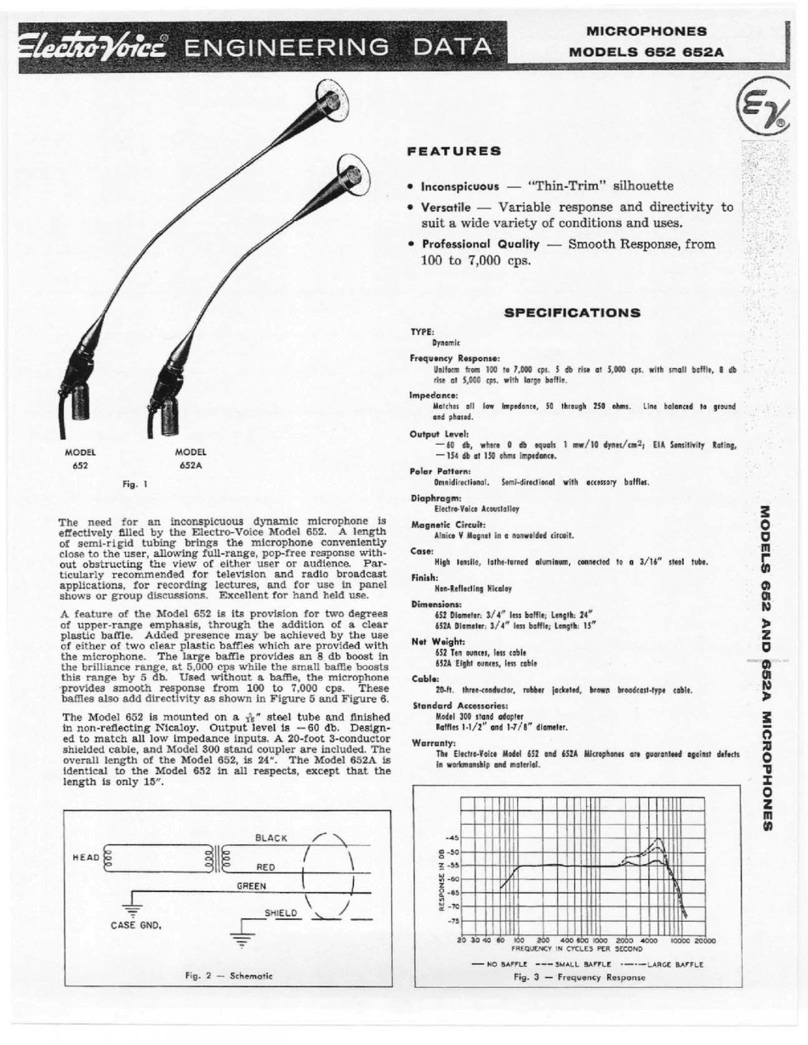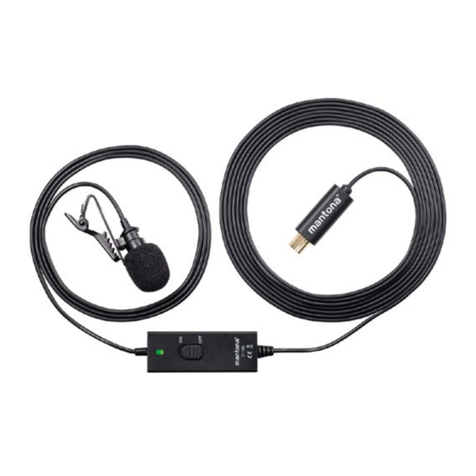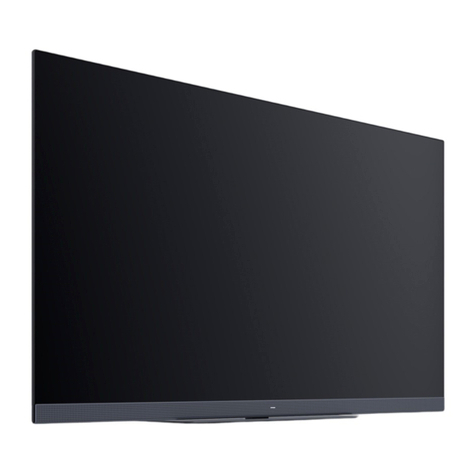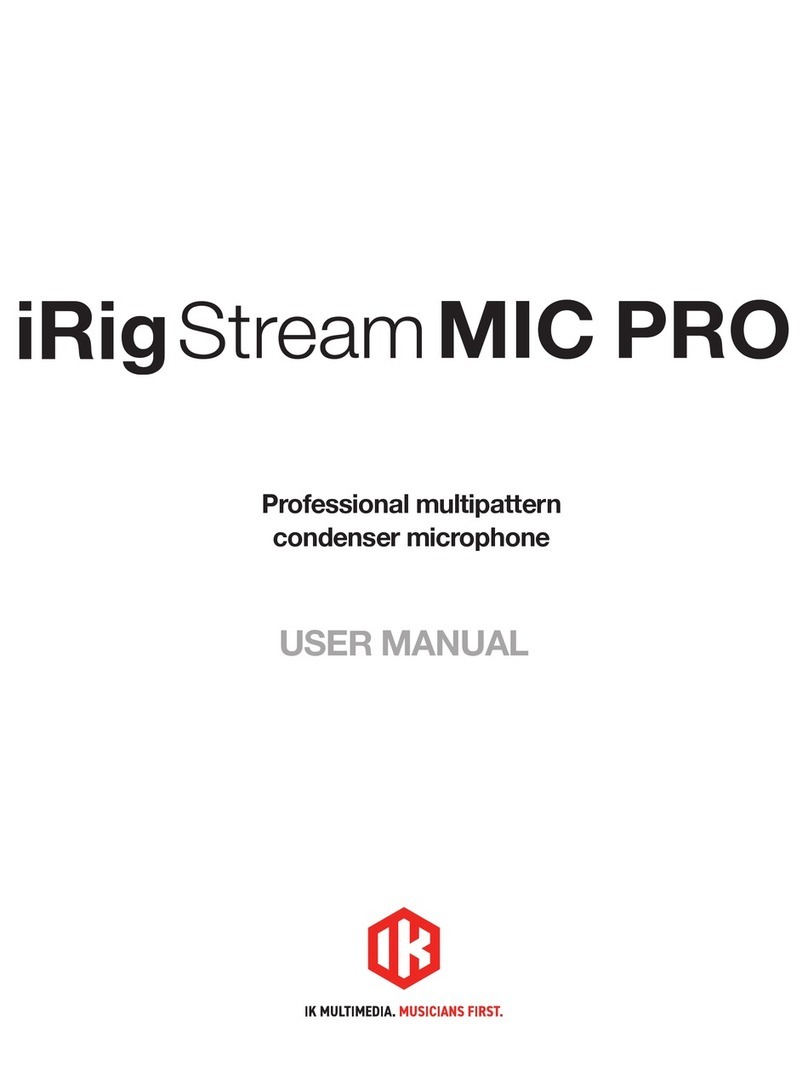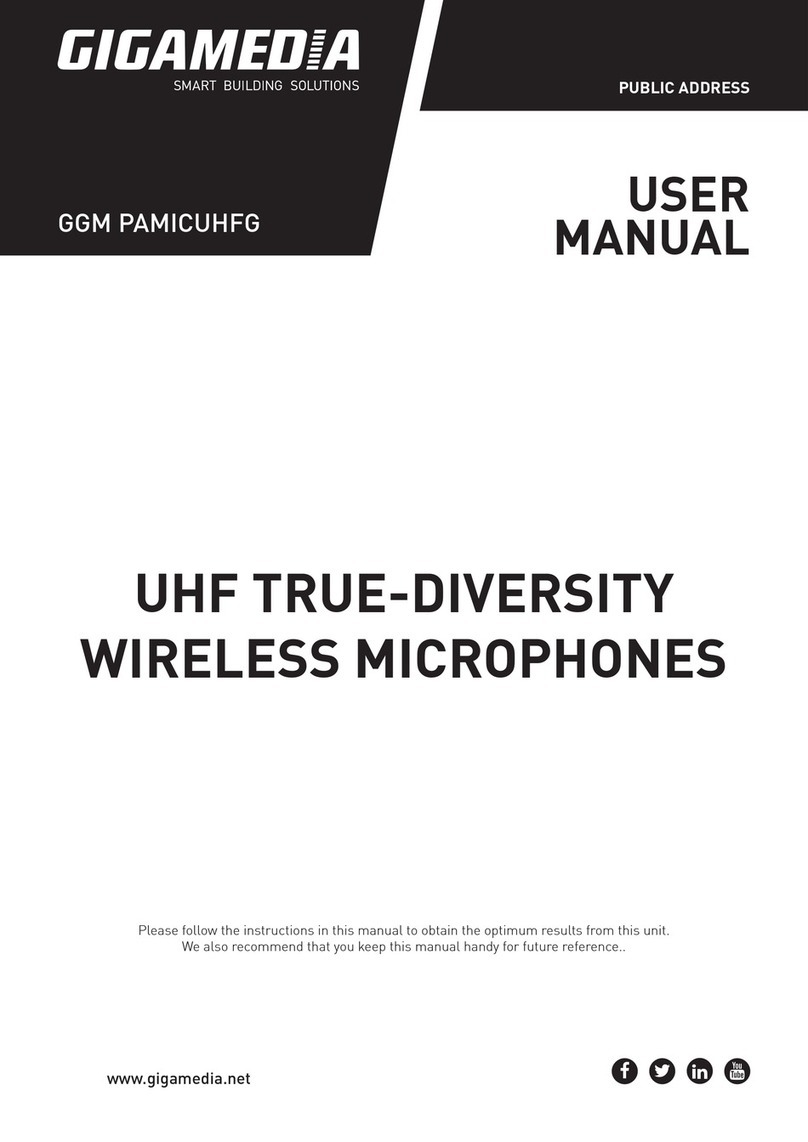The DP30/C was designed specifically for snare and toms that features a
flexible mini-gooseneck for easy positioning in addition to a high acoustic
input level that can handle up to 145 dB SPL. The Earthworks patented polar
technology provides excellent rear rejection and a uniformity of frequency
response out to 90 degrees off-axis. This vastly reduces phase cancellation
or other phasing issues, and minimizes cymbal leakage as well as acoustic
feedback problems in “live sound” applications.
Earthworks High Definition Microphones™
the New Science in Microphones
David Blackmer, the brilliant engineer who invented the unique technolo-
gies of dbx, is also the inventor and founder of Earthworks. In the last few
years of his life, David developed a number of revolutionary technologies that
dramatically improve the quality and performance of microphones. In short,
Earthworks High Definition Microphones™ will pick up sounds and detail that
other microphones cannot. These technological improvements are in the ar-
eas of impulse response, diaphragm settling time and polar technologies.
Those who have heard Earthworks High Definition Microphones™, say that
they hear more of the attack, more subtle details with a more pristine sound
quality than with any other microphones, regardless of price.
Miking Drums
There are many ways to mic drums and it seems that most every recording or
live sound engineer has their own way of doing so. Our objective is not to indi-
cate which drum miking approach is better, but to make suggestions and look at
advantages and disadvantages of each. Every engineer or producer uses their
own methods to obtain the results they desire, and that’s what matters.
Multi-microphone Method
The objective in multi-microphone drum miking is to place a separate mi-
crophone on either most or all the elements of a drum set. Typically, sepa-
rate mics are used on snare, toms, high-hat and kick drum with one or two
overhead microphones. The overhead mics pick up the overall sound of the
drums including cymbals, which are typically not miked separately. With this
method, the mixing engineer can control the level, and signal processing (lim-
iting, EQ, etc.) for each element of the drum set (toms, snare, hi-hat, etc.).
This provides a great deal of control over the sound of the entire drum set and
allows bringing out certain patterns on sock cymbal, snare, etc. Multi-miked
drums may be desirable when you are recording in a large room with high
ambient sound as it will reduce the amount of unwanted room sound, and for
5
Plug in the LevelPad, if Necessary
In close miking drums, one should keep in mind that the peak sound level at
the microphone head is extremely loud. Microphones used for close miking
drums should have a sound pressure handling capability of at least 140dB
SPL to prevent audible distortion. The Drum Periscope™ microphones will
handle up to 145dB SPL. However, as mentioned earlier, with this kind of high
sound pressure level, it is possible for the DP30/C microphone output level to
be as much as +24dBV which may overload some microphone preamplifiers.
The use of the Earthworks LP1530 LevelPad™ in the microphone line will pre-
vent any such distortion or overload. So, to be safe, we suggest that you first
plug a LevelPad into the mic line feeding the Drum Periscope microphone.
For full information refer to pages 3 and 4 of this manual.
Close Miking Snare Drums with the DP30/C
As previously mentioned, when close miking drums with a DP30/C Drum Peri-
scope™ microphone, never position the microphone head parallel to the drum-
head. Always position the microphone head at an angle to the drumhead. It is
also suggested that the microphone head be positioned between 1.5 inches and
3 inches above the drumhead. All of the previous information in this manual
applies to both toms and snares when using a DP30/C Drum Periscope Micro-
phone.
The DP30/C Drum Periscope Microphone has been optimized for miking snare
and toms. The DP30/C has a frequency response of 30Hz to 30kHz. The 30Hz
low frequency response will provide a full and fat sound from your toms. Howev-
er, when miking snares, the low frequency response of the DP30/C my make the
snare sound “tubby”. If you feel that there is too much low frequency response
when miking a snare, use either a high-pass lter set somewhere between 60Hz
and 100Hz to reduce the DP30/Cs low frequency response, or a low frequency
equalizer (EQ) to accomplish the same thing by attenuating/cutting a few dB in
the area of 60Hz to 100Hz for the desired results.
The DP30/C Drum Periscope Microphone™ can be used on either the top drum-
head, bottom drumhead or on both. Figure 7-A shows the DP30/C on a snare
drum with the microphone placed over the top drumhead, while Figure 7-B
shows a snare drum with both the top and bottom heads miked.
Close Miking Toms with the DP30/C
The DP30/C TomMic™ has been optimized for miking toms with a low frequen-
cy response down to 30Hz. This extended low frequency response will provide
a rich and full tom sound. You can mike either the top head of a tom with the
10
